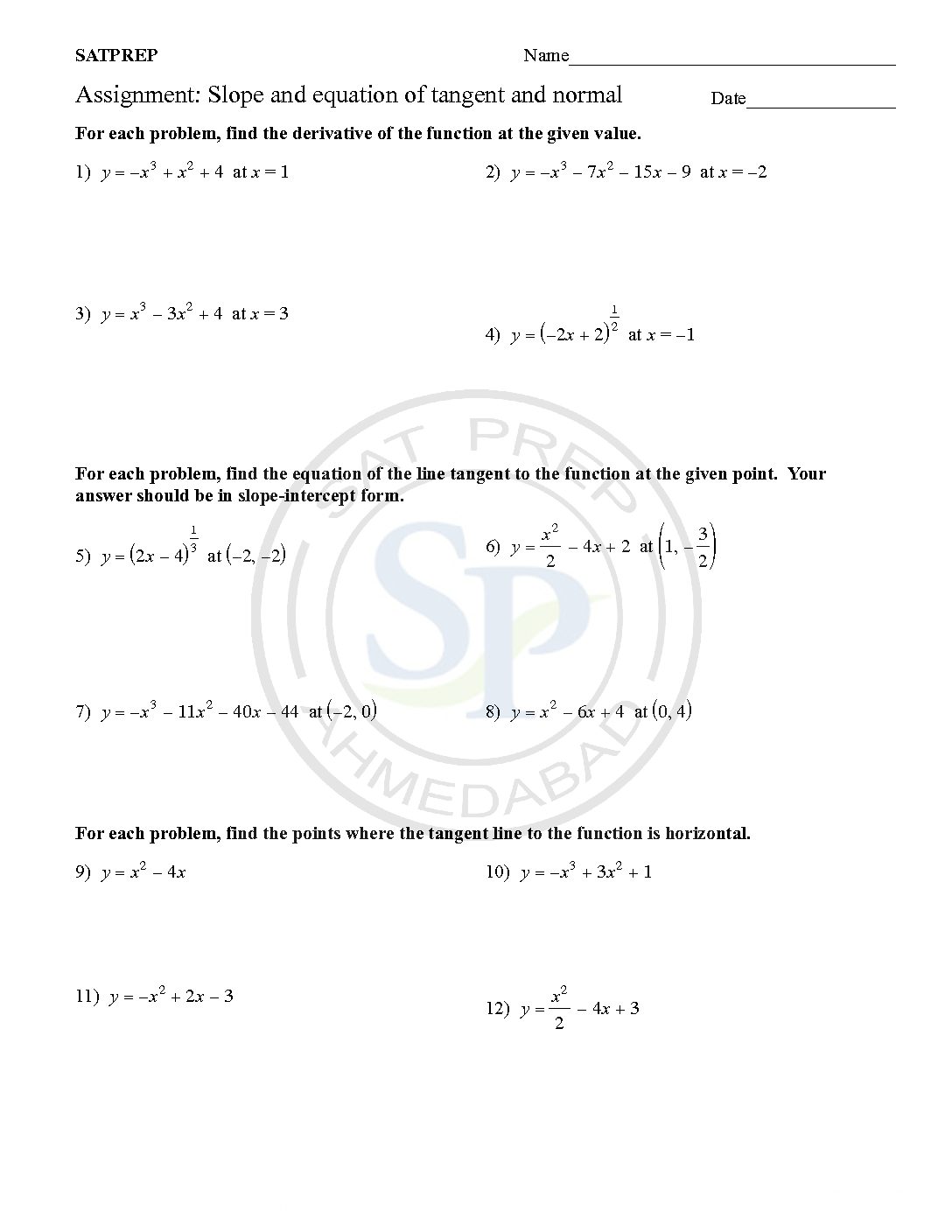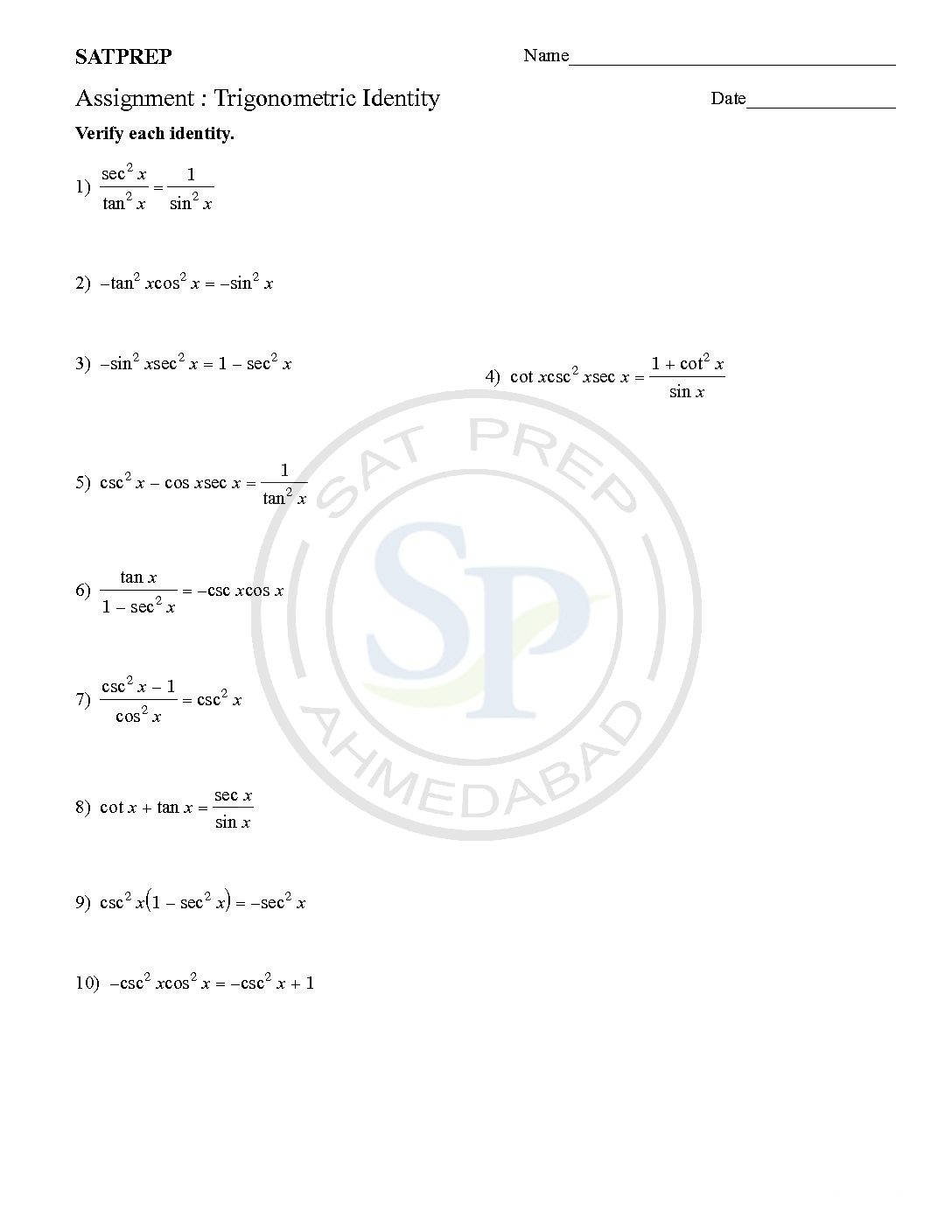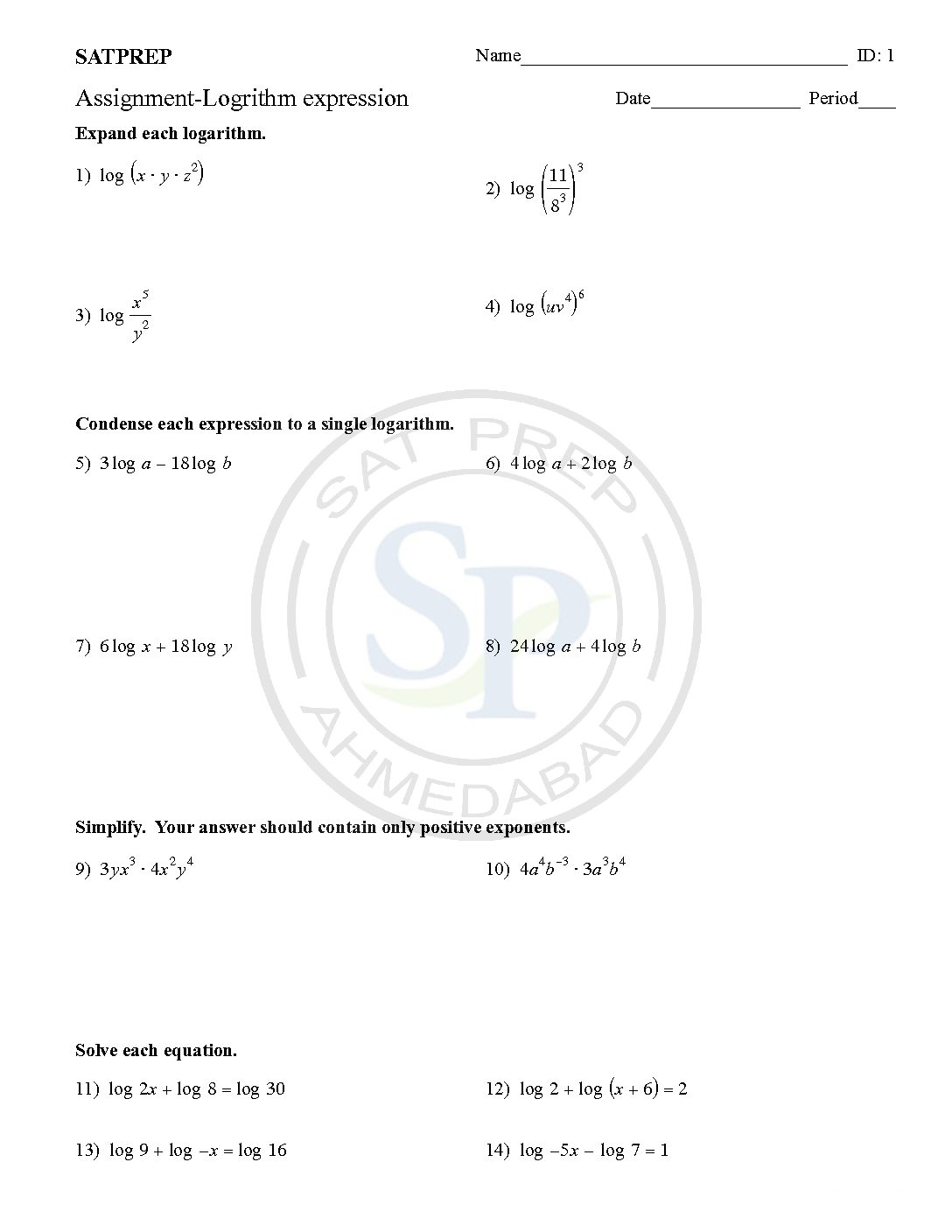Maximum and minimum of Points of Inflection. The value f ‘(x) is the gradient at any point but often we want to find the Turning or Stationary Point (Maximum and Minimum points) or Point of Inflection These happen where the gradient is zero, f ‘(x) = 0. Critical Points include Turning points and Points where f ‘ (x) does […]
You are browsing archives for
Category: Pure Maths
Equation of Tangent and Normal
Tangents to a curve are a line that touches the curve at one point and has the same slope as the curve at that point. A normal to a curve is a line perpendicular to a tangent to the curve. Tangent and Normal
Trigonometric equations
Trigonometric equations use both the reference angles and trigonometric identities The general method of solving an equation is to convert it into the form of one ratio only. Hence, we can obtain solutions. Trigonometric Equation
Trigonometric Identity
The trigonometric identity showing that the identity is always true, no matter what value of x or θ is used. Because it has to hold true for all values of x, we cannot simply substitute in a few values of x to “show” that they are equal. We have to use logical steps to show […]
Trigonometric Identity
trigonometry identities showing that the identity is always true, no matter what value of x or θ is used. Because it has to hold true for all values of x, we cannot simply substitute in a few values of x to “show” that they are equal. We have to use logical steps to show that one […]
Logarithmic Expression
Logarithmic Expressions are simplify by Rules or Laws of Logarithms and solve by inverse of exponentiation. It is expressed by using the abbreviation “log”. Because of different base of number log notation are also different. lg for base 10 , ln for base e . Logarithm quotient rule The logarithm of the division of x and y is the difference of logarithm of x […]
Absolute Equation
Solving absolute value equations and inequalities. And represents the distance between a and 0 on a number line. An absolute value equation is an equation that contains an absolute value expression. Has two solutions x = a and x = -a because both numbers are at the distance a from 0. Absolute Equation
Imaginary No.
Complex numbers have two parts, a “real” part and an “imaginary” part (being any number with an “i” in it). The Complex numbers is ” a + bi “; that is, real-part first and part imaginary i=√(-1) due to presence to i second part is imaginary. Imaginary no
Product to Sum
Product‐Sum and Sum‐Product Identities. The process of converting products into sums can make a difference . Integrate \( \int \! \sin 3x \cos 4x \, \mathrm{d}x.\) This problem may seem tough at first, but after using the product-to-sum trigonometric formula, this integral very quickly changes into a standard form . Converting a sum of trig functions into a product. Write as and then […]
Conversion Complex No Rectangular to Pol...
Converting from Polar Form to Rectangular Form. Either method of notation is valid for complex numbers. Rectangular form lending itself to addition and subtraction, and polar form lending itself to multiplication and division. Hence polar form of a complex number is another way to represent a complex number. The form z = a + b i is called the rectangular coordinate form of a complex number. This representation is very useful when we multiply or divide complex numbers. Therefore argand diagram use […]










